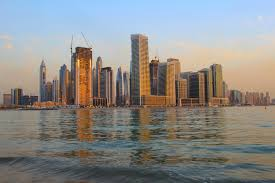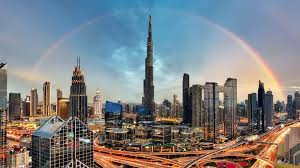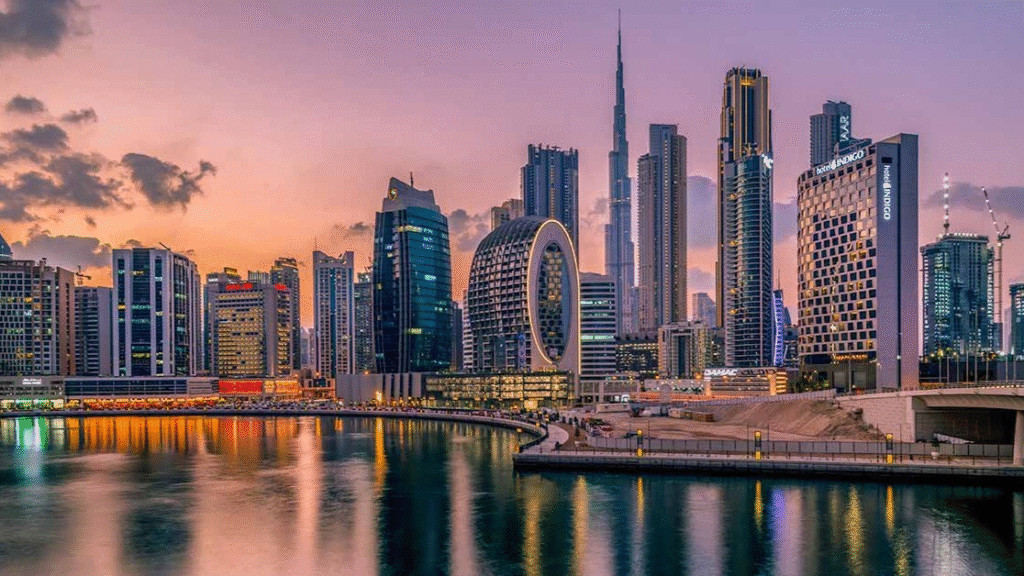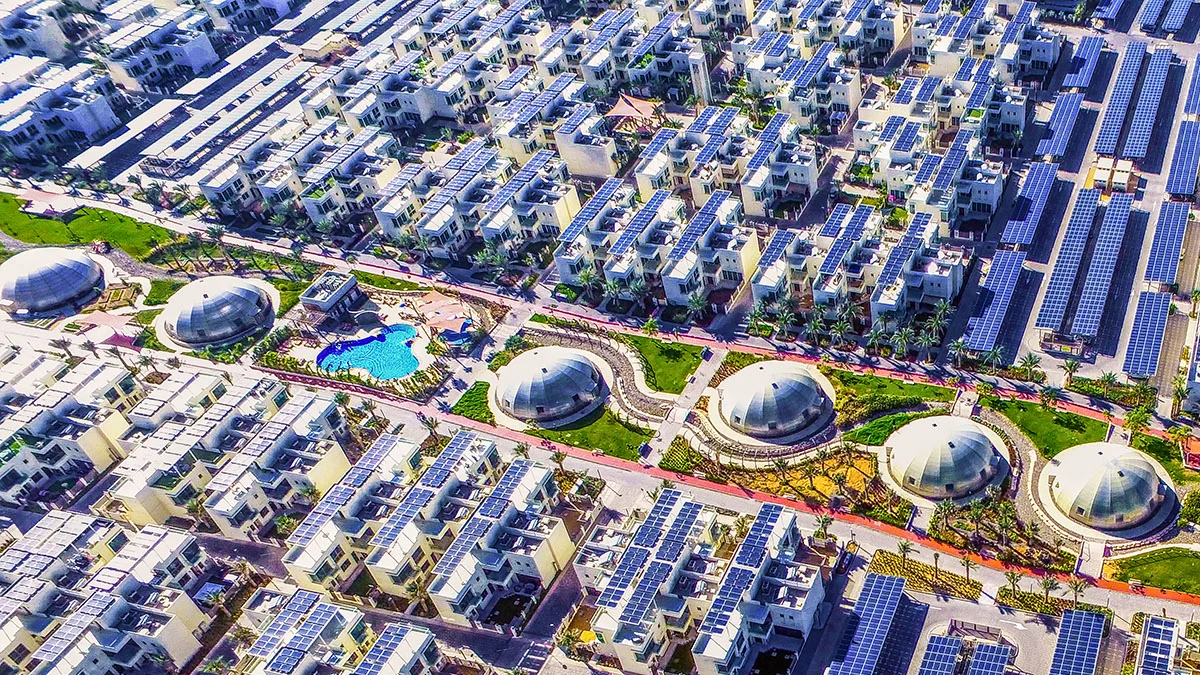Now Reading: 7 Powerful Strategies for Post-Boom Price Correction in UAE
-
01
7 Powerful Strategies for Post-Boom Price Correction in UAE
7 Powerful Strategies for Post-Boom Price Correction in UAE

Table of Contents
Post-Boom Price Correction: Dubai’s real estate market has long been a magnet for U.S. investors, drawn by its tax-free returns, luxury properties, and global appeal. After a remarkable boom, with property prices surging 18.9% in 2024 and transactions hitting AED 447.2 billion, the market is showing signs of a post-boom price correction in 2025. This shift, driven by increased supply and global economic pressures, presents unique opportunities for savvy investors. For Americans looking to capitalize on Dubai’s evolving landscape, strategic planning is key. This article, written in an engaging and SEO-friendly tone, outlines seven powerful strategies for U.S. investors navigating Dubai’s real estate market during this correction, offering practical insights, data-driven analysis, and a critical perspective on risks.
Understanding the Post-Boom Price Correction
Dubai’s real estate market experienced a stellar run, with off-plan sales soaring 104.6% in Q1 2025 compared to Q1 2024, per CBRE Middle East. However, a correction is underway, with price growth slowing to mid-single digits (4-6%) in 2025, down from 18.9% in 2024. Key factors include:
- Increased Supply: Over 65,000 residential units are slated for completion in 2025, easing the supply-demand imbalance that fueled the boom.
- Global Economic Pressures: Rising interest rates in the U.S. (Federal Reserve rates at 4.75-5% in June 2025) and geopolitical tensions are tempering investor appetite.
- Market Normalization: After a 39% price surge since 2020, areas like Dubai Marina and Downtown Dubai are stabilizing, with secondary market prices dropping 5-10% in Q1 2025.
Despite the correction, Dubai remains attractive, with 6-8% rental yields and no property or capital gains taxes. For U.S. investors, this is a chance to buy at lower prices, but success requires strategic navigation.
7 Powerful Strategies for U.S. Investors
1. Focus on Undervalued Secondary Market Properties
The correction has softened secondary market prices, offering bargains in prime areas like Dubai Marina, Downtown Dubai, and Jumeirah Village Circle (JVC). Ready properties, unlike off-plan units, allow immediate rental income, with yields averaging 6.8% in 2024, per Bayut.
- Action Plan: Target studios and one-bedroom apartments in JVC (from AED 600,000/USD 163,000) or Dubai Marina (from AED 1.2 million/USD 326,000).
- Why It Works: Secondary properties offer instant cash flow and lower risk of construction delays, ideal during a correction.
- Example: A AED 1 million JVC apartment could generate AED 68,000 annually at 6.8% yield, with 5-10% appreciation by 2027 as the market recovers.
2. Leverage Flexible Off-Plan Payment Plans

Off-plan properties remain popular, with 58,000 units sold in 2024, but prices are softening due to supply. Developers are offering attractive payment plans (e.g., 10% down, 1% monthly) to maintain momentum, making it easier for U.S. investors to enter the market.
- Action Plan: Explore projects like Emaar’s Address Residences in Dubai Hills (from AED 1.5 million) or DAMAC’s Lagoons (from AED 800,000). Negotiate post-handover payment plans to spread costs over 3-5 years.
- Why It Works: Flexible plans reduce upfront capital, allowing investors to lock in properties at current prices before potential recovery in 2026-2027.
- Example: A AED 1.5 million off-plan unit with a 60/40 plan (60% during construction, 40% post-handover) requires only AED 150,000 upfront, with 10-15% appreciation by handover in 2027.
3. Target Emerging Areas for Long-Term Gains
While prime areas like Downtown Dubai face price stabilization, emerging neighborhoods like Dubai South and Al Furjan offer growth potential at lower entry points. Dubai South, near Al Maktoum International Airport, saw a 12% price increase in 2024, per Knight Frank.
- Action Plan: Invest in Al Furjan’s mid-range apartments (from AED 700,000) or Dubai South’s Emaar South (from AED 900,000). Focus on areas with planned infrastructure, like Expo City Dubai.
- Why It Works: Emerging areas are less affected by the correction and benefit from future developments, offering 15-20% appreciation by 2030.
- Example: A AED 900,000 Emaar South unit could appreciate to AED 1.08 million by 2028, with 6-7% yields.
4. Capitalize on Short-Term Rental Opportunities

Dubai’s tourism boom, with 17.15 million visitors in 2024 (up 3.3% from 2023), drives demand for short-term rentals, especially in areas like Dubai Marina and Business Bay. Short-term yields can reach 8-10%, compared to 6-7% for long-term leases, per Airbnb data.
- Action Plan: Buy waterfront apartments in Dubai Marina (e.g., Emaar’s Marina Shores, from AED 1.8 million) and list on Airbnb or Booking.com. Hire property management firms to maximize occupancy.
- Why It Works: The correction lowers purchase prices, while tourism ensures high rental demand, boosting cash flow.
- Example: A AED 1.8 million Marina Shores unit could generate AED 144,000-$180,000 annually at 80% occupancy, offering an 8-10% yield.
5. Negotiate with Developers for Discounts
With supply rising, developers are more open to negotiations, especially for off-plan projects facing slower sales. Discounts of 5-10% or added incentives (e.g., waived service fees) are common in 2025.
- Action Plan: Engage directly with developers like Nakheel or Meraas for projects in Jumeirah Islands or Bluewaters. Use RERA-licensed agents to secure bulk deals or early-bird pricing.
- Why It Works: Discounts reduce entry costs, enhancing returns when prices recover.
- Example: A AED 1 million off-plan unit in Jumeirah Islands, discounted 10% to AED 900,000, could yield AED 63,000 annually (7%) and AED 180,000 in gains by 2028.
6. Diversify with Commercial Real Estate
Commercial properties, particularly retail and office spaces in Business Bay and Sheikh Zayed Road, offer stability during the correction, with 8-10% yields and 90% occupancy rates in 2024, per JLL.
- Action Plan: Invest in small office units in Business Bay (from AED 800,000) or retail spaces in Dubai Hills Mall (from AED 1.5 million). Focus on mixed-use developments for diversified income.
- Why It Works: Commercial spaces are less sensitive to residential oversupply, providing steady cash flow.
- Example: A AED 1 million office in Business Bay could generate AED 80,000-$100,000 annually, with 10% appreciation by 2027.
7. Partner with Local Experts for Due Diligence
Navigating Dubai’s market during a correction requires expertise to avoid overpaying or investing in low-potential projects. RERA-licensed agents and legal advisors ensure compliance and informed decisions.
- Action Plan: Hire firms like for market insights and UAE-based lawyers for contract reviews. Verify developer credentials via RERA’s portal.
- Why It Works: Local expertise mitigates risks like construction delays or greenwashing in eco-friendly projects, ensuring optimal investments.
- Example: Professional guidance could save 5-10% on a AED 1.5 million purchase by identifying undervalued properties or negotiating better terms.
Legal Considerations for U.S. Expats
- Freehold Ownership: U.S. investors can own properties in designated freehold areas like Dubai Marina, Downtown, and Dubai South, with title deeds from Dubai Land Department.
- Golden Visa: Properties worth AED 2 million qualify for a 10-year visa, achievable with units in Address Residences or Marina Shores.
- Tax Framework:
- Dubai: No property, capital gains, or rental income taxes. Residential sales are VAT-exempt; commercial transactions incur 5% VAT.
- U.S.: Report assets and income under FATCA. Rental income taxed at 10-37%, capital gains at 0-20%. Consult a tax advisor.
- Transaction Fees: 4% DLD fee, 2% agency fee, and AED 580-4,200 registration fees.
- Escrow Accounts: Mandatory for off-plan projects, regulated by RERA, protecting funds.
Risks and Mitigation
- Oversupply Risk: 65,000 units in 2025 could further soften prices. Focus on prime or emerging areas like Dubai Marina or Al Furjan.
- Construction Delays: Verify developer track records via RERA. Emaar and DAMAC are reliable.
- Global Volatility: U.S. interest rate hikes or geopolitical tensions may reduce demand. Dubai’s diversified economy (tourism, trade) mitigates impact.
- Speculative Hype: Avoid projects with inflated return claims. Cross-check with CBRE or Knight Frank reports.
- U.S. Tax Burden: IRS reporting reduces net returns. Use deductions to offset taxes.
Conclusion
Dubai’s 2025 real estate price correction, following a 18.9% boom in 2024, offers U.S. investors a golden opportunity to enter a dynamic market at lower prices. By focusing on undervalued secondary properties, leveraging off-plan payment plans, targeting emerging areas, capitalizing on short-term rentals, negotiating discounts, diversifying with commercial real estate, and partnering with local experts, investors can achieve 6-10% yields and 10-20% appreciation by 2027. Despite risks like oversupply and global volatility, Dubai’s tax-free environment and tourism-driven demand ensure long-term potential. watch more like this
read more: Ras Al Khaimah Real Estate: Review Waterfront Apartment Boom in 2025





















